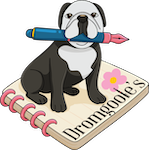I spoke about Moleskine journals on the podcast this week and it generated a lot of spirited conversation on both sides of the ledger. I think it's pretty clear that I am not a fan of the brand, but I wanted to elaborate a little bit as to why.
When I say Moleskine as a general term I am talking about one specific model: the hardbound Classic Journal in 8.25" x 5". This is the ubiquitous Moleskine. The one that is fawned over by the press, and the one that doesn't fit my needs. That's the key here. My needs. If it fits your needs that's fantastic. You should definitely keep using them. But for me, Moleskine paper falls short of its competition.
For the most part, Moleskines work well with ballpoint pens, fine liquid ink pens, and pencils. I've traveled before with just a Moleskine and a Fisher Space Pen refill and been completely satisfied. But my two favorite pen types - micro tip gel ink pens and fountain pens - perform poorly on Moleskine paper. Luckily, we live in a world where other options are only a mouse click away. I've tested all of the notebooks below and would choose any of them over the standard Moleskine Journal.
Moleskine alternatives (Classic Journal, 8.25" x 5"), in no particular order:
Leuchtturm 1917 - The closest in look, style, feel, and price, but with better performing paper for a wider range of pen types.
Rhodia Webnotebook - My personal favorite, and the best for fountain pens. Longer dry time is the tradeoff.
Baron Fig Confidant - Great style and format, could work better with fountain pens but great with gel ink.
Quo Vadis Habana - Slightly bigger and more expensive but on par or better than Rhodia.
This list just scratches the surface. Don't even get me started on other sizes, such as pocket notebooks and top-bound pads. We could get into the hundreds on that list!
I just ask that you keep in mind one thing when reading this blog or listening to the podcast: You don't have to agree with everything I say. And you shouldn't. Disagreement is good and healthy. We all have specific needs that we are trying to solve for, and within that journey lies the fun. I'll keep having opinions, and you should too.
















